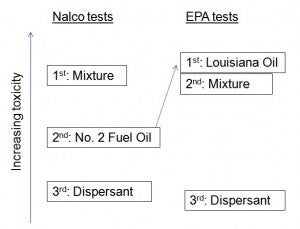 Richard Denison, Ph.D., is a Senior Scientist.
Richard Denison, Ph.D., is a Senior Scientist.
Remember that old naïve saw, “Dilution is the Solution to Pollution”? When it comes to the dispersants used last year to address the Deepwater Horizon disaster in the Gulf of Mexico, that axiom appears to be the operative mechanism.
Last week, researchers at Woods Hole Oceanographic Institute published data showing that a key component of the Corexit dispersant used by BP to address the oil spill, did not degrade – as had been predicted by just about everybody, including BP, the Coast Guard, the dispersant manufacturer Nalco and EPA. In fact, it was still detectable when last looked for in September, 5 months after the spill began and at least two months after use of dispersants had ceased. Read More










